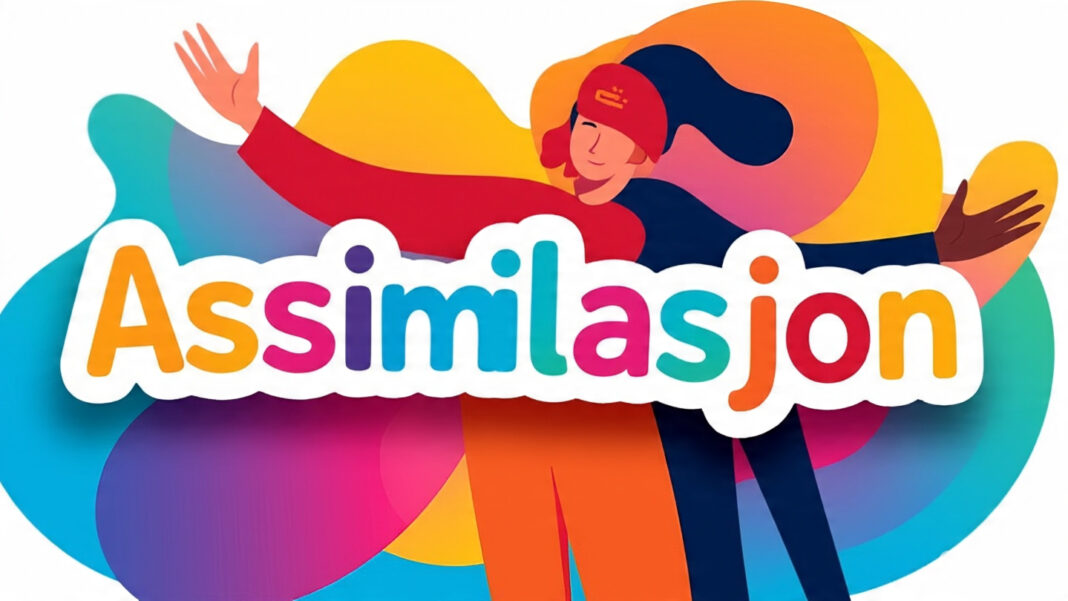A word widely used in social science refers to this process, where individuals or groups of different cultural background gradually adopt the language, values, criteria and behaviors of another culture – often the chief in society.
At its core, assimilasjon is about a combination, whether it means to embrace different traditions, or to adjust social expectations for a new language. It is an academic concept and a deep personal experience, bound by migration, identity and related.
Historical Roots
The idea of assimilasjon is centuries old.
- In the Roman Empire, conquered people often needed to follow Latin learning, follow the Roman law and adopt Roman religious practices. While some saw it as progress, others saw it as the abolition of identity.
- In the 19th and 20th centuries, assimilation became central for nation-building projects. Immigrants in Europe and North America were expected to overtake the national language, leave the old customs behind, and increase their children within the major culture.
- History also reveals resistance to assimilasjon. In Scandinavia, indigenous groups like Sami tolerated forced policies, but fought to keep their heritage alive.
This tension between protection and adaptation remains central for debate on Empilsjone.
Types of Assimilasjon
Sociologists classify assimilasjon in many forms:
1. Cultural Assimilation
Adopting language, traditions, fashion, food and customs of major society.
2. Structural Assimilation
When minority groups gain access to education, jobs, politics and institutions on equal terms.
3. Identity Assimilation
When people begin to identify emotionally with major culture, sometimes more strongly than their heritage.
4. Voluntary vs. Forcible Assimilation
- Voluntary: Opportunity, related, or chosen for advancement.
- Forced: Appointed by governments or systems, often eradicating cultural diversity.
Assimilasjon in Modern Multicultural Societies
Globalization has made assimilasjon and integration more complex.
- Countries like Canada promote multiculturalism, encouraging cultural protection by promoting participation in society.
- At the same time, pressure remains:
- Learning national language is essential for education and jobs.
- Dress codes create subtle pressure to assimilate social norms around holidays and lifestyle.
Technology also affects assimilasjon. Social media allows immigrants to maintain relations with their culture while adopting trends from their new societies, creating hybrid identity.
Psychological Side
Assimilasjon is not only external — it is deep psychological.
- Many second-generation immigrants experience identity struggle, balancing heritage with new cultural expectations.
- For some, it brings opportunities and confidence.
- For others, it may feel like loss of identity, conflict, or isolation.
Some people embrace both traditions, while others separate public and personal life. This emotional complexity makes assimilasjon a personal journey rather than a uniform process.
Assimilasjon vs. Integration
While often confused, the two are different:
- Assimilasjon: Minority groups perfectly adapt to major culture, sometimes losing heritage.
- Integration: A two-way process where both cultures adjust, promoting co-existence and respect.
Modern policies prefer integration to build inclusive societies.
Case Studies of Assimilasjon
- United States: Long described as a “melting pot,” where assimilasjon was encouraged through language and education. Yet many immigrant groups still maintain cultural traditions.
- Scandinavia: The indigenous Sami population faced forced assimilasjon but resisted, preserving their language and identity.
- France: Strong emphasis on national identity led to strict policies, such as restrictions on religious symbols in public life.
Pros and Cons of Assimilasjon
Professionals
- Promotes social unity
- Provides economic and educational opportunities
- Reduces discrimination through shared identity
Shortcomings
- Can erase cultural heritage
- May cause identity conflict
- Risks making societies less diverse
The Future of Assimilasjon
In a global, digital world, assimilasjon is changing.
- Younger generations often create hybrid identities, combining heritage and mainstream culture.
- Governments that support diversity while promoting unity are more likely to create inclusive societies.
The future will not be about eradicating assimilasjon differences — but about balance, coexistence, and respect.
FAQs about Assimilasjon
Q1. What does assimilasjon mean?
Assimilasjon is the process where individuals or groups adopt the culture, language and values of another society, often the dominant one.
Q2. What are the main types of assimilasjon?
Cultural, structural, and identity assimilasjon are the primary forms.
Q3. How is assimilasjon different from integration?
Assimilasjon requires minorities to fully adapt to the majority culture, while integration encourages mutual adjustment.
Q4. Is assimilasjon always forced?
No, it can be voluntary (for opportunity or choice) or forced (through government policies).
Q5. Why is assimilasjon important today?
It shapes how multicultural societies manage identity, opportunity, and cultural diversity.
Conclusion
Assimilasjon is a complex process that affects culture, psychology, and society. From ancient empires to modern immigration, it has shaped identity throughout history.
While it can promote unity and belonging, it also raises challenges of diversity and heritage protection. In today’s interconnected world, the future of assimilasjon lies in creating hybrid identities and inclusive societies, where cultural diversity is respected, and shared values are promoted.

